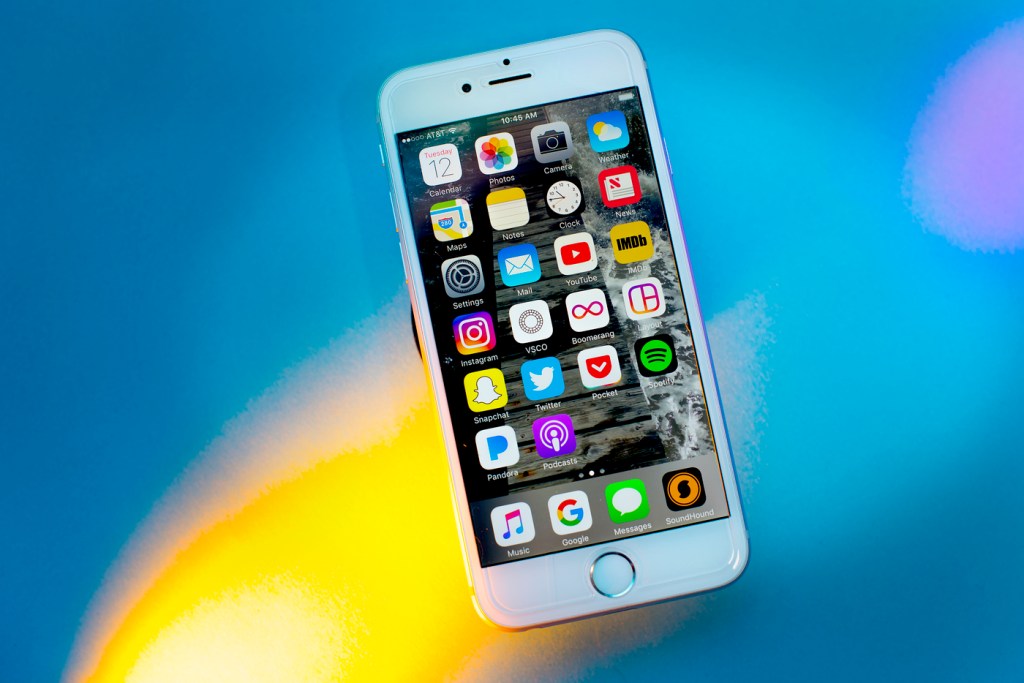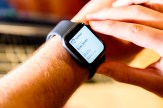What we’ve gained—and lost—after a decade with smartphones

On Tuesday, Apple unveiled its newest generation of products at an event celebrating a decade since the first iPhone was released. Though it wasn’t the first smartphone on the market, its commercial success—and the subsequent saturation of smartphones across the globe—have changed society in massive ways, said two Northeastern professors.
“Now, we’re always connected to the internet and to each other,” said David Choffnes, assistant professor in the College of Computer and Information Science. “Things that were either impossible or really inefficient to do are now sort of an afterthought.”
Choffnes rattled off a list of tasks that are now outsourced to smartphones, including getting directions, receiving restaurant recommendations, and looking up an actor’s past work while watching a TV show. “We have all the unlimited knowledge and connectivity that comes with being connected to the internet, but now it’s in your pocket or purse,” he said.
Stephen Intille, associate professor with appointments in both CCIS and the Bouvé College of Health Sciences, also noted the sheer power most people carry around with them now.
“If you think about how much people’s use of computers has changed over the past 10 years, it’s pretty extraordinary,” he said. “You can take all that computational power with you and access it remotely. It’s almost hard to remember a time when that wasn’t the case.”
Number of Smartphones Sold to People Worldwide from 2007 to 2016
Graph by Lia Petronio/Northeastern University. Data Source: Statista.
Changing the way we communicate
At its core, of course, a smartphone is still a phone. But both Choffnes and Intille noted that the call function is almost secondary to what else the devices can do.
“Smartphones are changing the way people communicate, and not always necessarily for the better,” Intille said. “It means that people are much more into their devices than they are looking around or talking to the people around them.”
Choffnes put it this way: “As much as smartphones help us connect to each other over distances, they have helped us disengage with each other in the real world.”
That list of functions he ticked off were all opportunities for interaction in the pre-smartphone era—asking for directions, soliciting restaurant recommendations, and debating the merits of a certain actor.
“I think there was this promise of an increased ability to stay in touch, but increasingly, we’re disengaging with each other,” Choffnes said.
Privacy, please
Additionally, as more and more people integrate smartphones into their daily lives, privacy concerns continue to grow. “When smartphones first came out, we were so excited for the new services that we didn’t really think about privacy; we hadn’t had something like a smartphone before, so we didn’t think of the implications,” Choffnes said.
In those early days, however, it’s unlikely that the collection and monetization of users’ personal information was as sophisticated as it is now, he said. Today, smartphone users are often cornered into making a binary decision: Use an application that collects and sells personal data, or don’t use the app at all.
“There’s no middle ground,” Choffnes said.
Percentage of All Global Web Pages Served to Mobile Phones from 2009 to 2017
Graph by Lia Petronio/Northeastern University. Data Source: Statista.
Eye-Phone
The type of biometric information that smartphones store has exploded since the early days, as well. On Tuesday, Apple announced that consumers would be able to unlock the newest iPhone by facial recognition technology. This feature builds off its past models, which used numerical passcodes and fingerprint scanners to unlock the devices.
For Intille, whose research includes the development and validation of personal health informatics systems that harness mobile sensing, the advent of what are essentially wearable health monitors spells boundless opportunity.
“Because smartphones are so pervasive, there’s been a shift in the health research community where people have acknowledged that this has a huge potential to help with health and wellness,” he said. “We may be able to use these technologies in new ways, and that wouldn’t have been possible unless people had adopted them in the sort of way they have.”
Most Popular Smartphone Apps in the United States as of June 2017
Graph by Lia Petronio/Northeastern University. Data Source: Statista.
What’s next?
So, what will tech experts be talking about 10 years from now? Intille thinks a deeper personal relationship between user and tech is in store.
“I think we’ll see that devices will have a richer understanding of what you’re doing, of what you like and don’t like, and they’ll use those models to deliver certain services to you,” he said. “More and more personalization made possible by data aggregation could make computers even more useful.”
Choffnes offered a different, though no less personal future.
In addition to expecting a rise in virtual reality experiences, Choffnes said, “We interact with our devices very manually now. I wouldn’t be surprised if the ways we interact 10 years from now are more than just touch and speech, but really harness the other three senses as well.”





